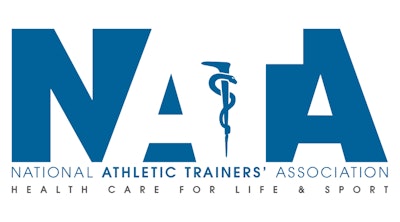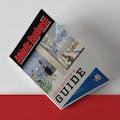
Joe Farrell currently serves as the chair of the Sudden Cardiac Arrest (SCA) Foundation. At Thursday’s National Athletic Trainers Association webinar, “Sudden Cardiac Arrest: Reducing Risk and Ensuring Best Care in Sport and Life,” he shared his personal story of how he came to serve in this position.
Said Farrell, “I suffered cardiac arrest at a colleague’s home, and I was saved by a stranger who recognized that I was in cardiac arrest. They called 911 and began CPR. I received 8-12 shocks to get my heart back into rhythm. I’m one of the very fortunate 10% who survive out-of-hospital SCA.”
Farrell was lucky indeed, not only do very few SCA victims survive outside of a hospital setting, but a comparable few Americans are certified in CPR. According to data from SCA, an estimated 18% of the US has received CPR training.
Farrell was joined on the webinar by NATA president, A.J. Duffy, SCA Foundation chair Gina Peattie, prep school athletic trainer Joe Thompson, University of Michigan executive senior associate athletic director Darryl Conway, NFL senior medical advisor Robb Rehberg and AED project facilitator Mark D'Anza.
While Farrell experienced sudden cardiac arrest well into his adulthood, SCA remains the number-one cause of death for student-athletes. As a result, the Hearts Act was passed in Dec. 2024 to prepare staff at schools nationwide to respond to CSA
Said Farrell, “23,000 children experience cardiac arrest outside the hospital each year and 40% are related to sports.”
“We need to educate our youth and public to be trained in CPR,” he continued.
The NATA webinar sought answers from multiple angles to address the problems surrounding SCA detection, prevention and treatment in athletics, fitness and recreational settings.
One panelist, Michael Emery serves as the co-director of the sports cardiology center at the Cleveland Clinic Heart, Vascular & Thoracic Institute. From Emery’s perspective, he believes victims have the best chance of survival if medical personnel and bystanders assume the medical emergency is a sudden cardiac arrest until proven otherwise.
“SCA is not happening more frequently in our youth population, but it is recognized more frequently,” said Emery.
At the University of Michigan, where panelist Darryl Conway serves as executive senior associate athletic director, the team is prepared to respond to SCA quickly and effectively. There are more than 75 AEDs at the Wolverine’s athletic facilities.
“Our expected drop to shock times are less than 2 minutes, and our goal is less than one minute,” said Conway.
From robust emergency action plans to the availability of AEDs and bystander intervention, the panelists agreed that increasing education of CPR nationwide is possible and could be an important step in reducing the risk of sudden cardiac arrest to student-athletes.
The NATA Webinar focused on sudden cardiac arrest this month to recognize ‘American Heart Month’ which occurs in February each year. For 2025, the SCA Foundation said the theme of American Heart Month is ‘Empowering Hearts to Save Lives.’
As a part of programming the SCA created all month long, the foundation focused on educating people on what SCA is, what the signs are and the actions needed (CPR, AED). SCA Foundation also created online resources including quizzes to test your knowledge, and they emphasize the importance of bystander intervention. You can find those resources, here.





































